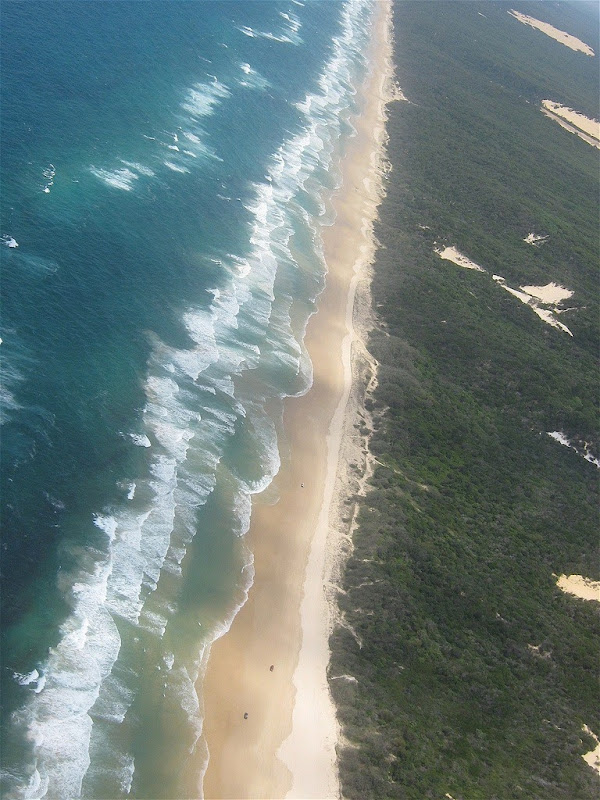Fraser Island is located along the southern coast of Queensland, Australia, approximately 200 kilometres (120 mi) north of Brisbane. Stretching 120 kilometers in length and approximately 24 kilometers at its widest point, it is considered to be the largest sand island in the world.
The island is of exceptional natural beauty with rainforests, eucalyptus woodland, mangrove forests, wallum and peat swamps, sand dunes and coastal heaths. The region has over 250 kilometers of clear sandy beaches with long, uninterrupted sweeps of ocean beach, including more than 40 kilometers of strikingly colored sand cliffs, as well as spectacular blowouts. Inland from the beach are majestic remnants of tall rainforest growing on tall sand dunes, a phenomenon believed to be unique in the world. Half of the world’s perched freshwater dune lakes occur on the island, producing a spectacular and varied landscape. The world’s largest unconfined aquifer on a sand island has also been found here.
Photo credit: Yann Arthus Bertrand
The sand on Fraser Island has been accumulating for approximately 750,000 years on volcanic bedrock that provides a natural catchment for the sediment which is carried on a strong offshore current northwards along the coast. These dunes progress across the island often burying forests and other plant communities. The rate of movement of the dunes each year depends on factors such as wind strength, the amount of moisture in the sand and plant colonization. These dunes will gradually stop moving when they reach areas protected from the winds.
The young dunes behind the eastern beaches are colonized and stabilized by spinifex grass and other coastal plants adapted to harsh salt and wind conditions. In the sheltered central regions of the island, where the dunes are stable and there are more nutrients for growth, diverse plant communities and rainforests are found.
Unlike many sand dunes, plant life is abundant due to the naturally occurring mycorrhizal fungi present in the sand, which release nutrients in a form that can be absorbed by the plants. Fraser Island is home to a small number of mammal species, as well as a diverse range of birds, reptiles and amphibians, including the occasional saltwater crocodile. The island is part of the Fraser Coast Region and protected in the Great Sandy National Park.
Fraser Island has been inhabited by humans for as much as 5,000 years. Explorer James Cook sailed by the island in May 1770. Matthew Flinders landed near the most northern point of the island in 1802. For a short period the island was known as Great Sandy Island. The island became known as Fraser due to the stories of a shipwreck survivor named Eliza Fraser. Today the island is a popular tourism destination.


Sources: Wikipedia, Fraserisland.net, UNESCO
























Great photos :)
ReplyDelete